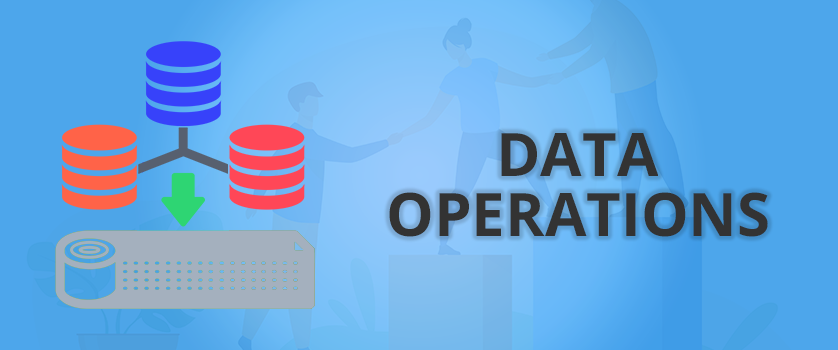


Ever since its introduction, DevOps, the software development approach to agile and quality software development and delivery, has initiated the introduction of various new software engineering methodologies and disciplines that facilitate collaboration between dev, operations, and other engineering teams, allowing them to build and deliver new software or features consistently and reliably.
DataOps is one such emerging discipline, introduced as a data analytics best practice that has now evolved into a new and independent data analytics approach. The methodology brings together DevOps teams with data engineers and data scientists to facilitate support to data-focused enterprises in their technical journey by borrowing DevOps practices and principles that improve the velocity, quality, predictability, and scale of the data analytics process.
But what is the significance of this methodology? What role does it play in DevOps?Well, to answer these questions and more, we are here with our detailed discussion of DataOps.
Nowadays, when organizations across industries are becoming more and more data-driven, using an excessive amount of data to deliver excellence to customers consistently, maintaining a thorough understanding of data assets can be challenging, which is further made difficult by the constantly changing, complex data environments. It is to help data-driven organizations overcome such challenges, DataOps was introduced by Lenny Liebmann in 2014 in a blog post on the IBM Big Data & Analytics Hub.
Later defined by Gartner as a "collaborative data management practice", DataOps or Data Operations is a combination of tools and methodologies that streamlines the development of new analytics and ensures a high level of data quality.
It orchestrates, monitors, and manages the data factory and helps improve communication, integration, and data flow automation between data managers and consumers across an organization, facilitating faster delivery of value. This automated, cross-functional, process-oriented methodology accelerates lifecycle and improves collaboration, orchestration, quality, security, access, and ease of use.
Moreover, as suggested by its name, the methodology borrows heavily from DevOps. However, it is important to understand that DataOps is a result of collective principles of three major technologies and practices: DevOps, Agile, & Statistical Process Controls that enable it to bring speed and agility to the end-to-end data pipeline process, from collection to delivery, and offer necessary support to teams with automation technology, improving their productivity and delivering huge efficiency gains in project outputs and time.
Since its introduction, DataOps has effectively improved data efficiency and helped organizations convert raw sources into valuable intelligence. Moreover, it has become a key to reducing data costs, accelerating analytics, and enabling better outcomes.
Characteristics that define DataOps are listed below:
Though there is no one approach to implementing DataOps, there are some key areas of focus that can help an organization implement DataOps successfully and enjoy the various benefits it offers. These areas of focus include:
From bringing automation and cultural shift to an organization’s data project to encouraging collaboration and constant data innovation within a data-driven environment, DataOps offers a range of benefits to organizations, which have made it an extremely critical aspect of the data management and analytics process.
Therefore, here are a few benefits of DataOps that are playing a key role in its frequent adoption:
From the steps defined earlier, we can conclude that the teams must adopt certain DataOps best practices to ensure process accuracy, speed, quality, and efficiency. These best practices are critical for DataOps implementation and help bring together a team with a variety of technical skills and backgrounds. Therefore, the DataOps best practices include:
DevOps and DataOps are two inter-related engineering concepts with different objectives. While DevOps has changed how software is developed, making it more agile, quality, and flexible. DataOps, a subset of DevOps, has changed how data products are being created, aiming to improve the quality and reduce the cycle time of Data and Analytics initiatives.
Other prominent differences between the two include:
| Areas | DataOps | DevOps |
| Value Delivery |
Data Engineering, Analytics, Data Science, & Business Intelligence. |
Software Development and Delivery. |
| Quality Assurance |
Involves Data Governance and Process Control. |
Involves Code Reviews, Continuous Testing, & Continuous Monitoring. |
| Teams Involved |
Data Analytics Team of Data Engineers, Data Scientists, Developers, and Line-of-Business Employees. |
Software Development and IT Operations Teams. |
| Goals |
Aligns Data and Data Team Towards Business Goals and Improves Product Quality. |
Removes Silos, Encourages Team Collaborations, Shortens the Software Development Lifecycle (SDLC), and Improves Quality and Speed. |
| Challenges |
Data Teams and Line-of-Business have Different Goals. |
Dev & Operations Teams Requires Different Toolkits. Resistance in Adopting DevOps within Organization. |
However, DataOps and DevOps also share certain similarities. Both are agile approaches that remove silos, promote collaboration between teams, and increase agility. Moreover, DataOps uses DevOps processes to optimize code, product builds, and delivery to streamline and improve data quality.
Some of the most popular and beneficial tools that help organizations build and implement DataOps platform are:
The increasing complexity of data ecosystems has resulted in new challenges for organizations in the past few years and prevented them from saving data costs, improving analytics, and achieving their business goals. It is to overcome these challenges and more, organizations are turning towards DataOps, the data management methodology, popular among software engineers as well as Artificial Intelligence and Machine Learning specialists.
This methodology, with its ability to remove siloed data, regulate multi-cloud data environments, compliance regulations, etc. has made it the one-stop solution for any data management, monitoring, and analysis issues.